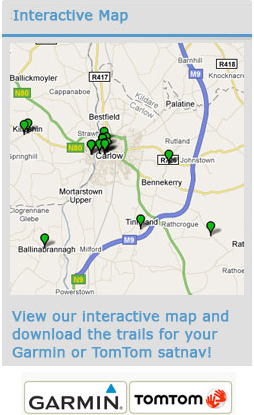| Antae |
Projections of the side walls of early churches to support roof timbers. |
| Ashlar |
Masonry comprised of squared stones. |
| Barn-church |
Church built to a simple T plan with a large internal space. This style was often used by the Catholic Church in the early nineteenth-century. |
| Bullaun Stone |
Stone with man-made circular depressions usually found near early church sites. Various functions have been suggested for these stones, some ritual and some associated with metal-working or grinding of corn. |
| Catholic Emancipation |
The repeal of the discriminatory Penal Laws which was completed by 1829. |
| Chancel |
The eastern part of a church, usually where the main altar is situated. |
| Choir |
Part of church commonly occupied by singers, situated between the nave and the chancel. |
| Crennelation |
Notched parapets, resembling those on a stone castle. |
| Crossing |
The intersection of transepts and nave. |
| First Fruits Church |
A Church of Ireland church whose building was financed by the Board of First Fruits established largely through the influence of Jonathan Swift (1667–1745). |
| Gothic |
Style of architecture, originating in the middle ages, characterised by pointed arches. When used in more recent times, it is described as neo-Gothic or Gothic revival. |
| Nave |
The main aisle of a church, occupied by the congregation |
| Ogham Stone |
Stone bearing inscription in ancient Celtic alphabet comprising straight lines |
| Oratory |
Chapel or other place for private prayer |
| Patron or pattern day |
Day on which graves are visited and mass celebrated in graveyards. |
| Penal Laws |
Legislation passed between 1695 and 1728 which severely curtailed the practice of the Catholic religion in Ireland and the participation of Catholics in public life. |
| Quakers |
Popular name for a group of Christians who use no scripture and believe in a simple, pacifist lifestyle. They call themselves The Society of Friends. |
| Quatre-foil |
Open-work design or ornament divided into four lobes |
| Reredos |
A screen or panel behind an altar |
| Rib Vault |
An arched roof or ceiling in which the surface is divided into webs by a framework of diagonal arched masonry ribs. |
| Romanesque |
Style of early medieval architecture characterised by round arches. Sometimes called ‘Norman.’ |
| Sedilia |
Seats for clergy on the south side of the chancel, often located in niches. |
| Single-cell church |
Simple structure without aisles or projections |
| Trefoil |
Three-lobed form of ornamentation, especially in tracery |
